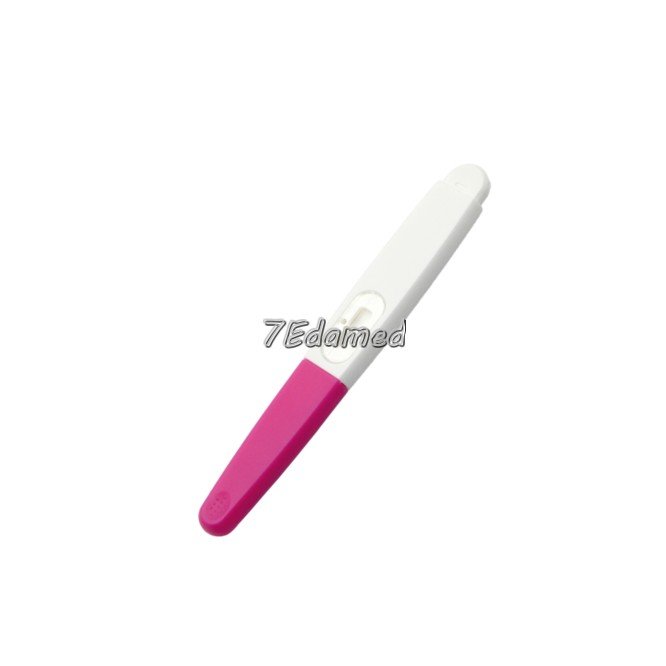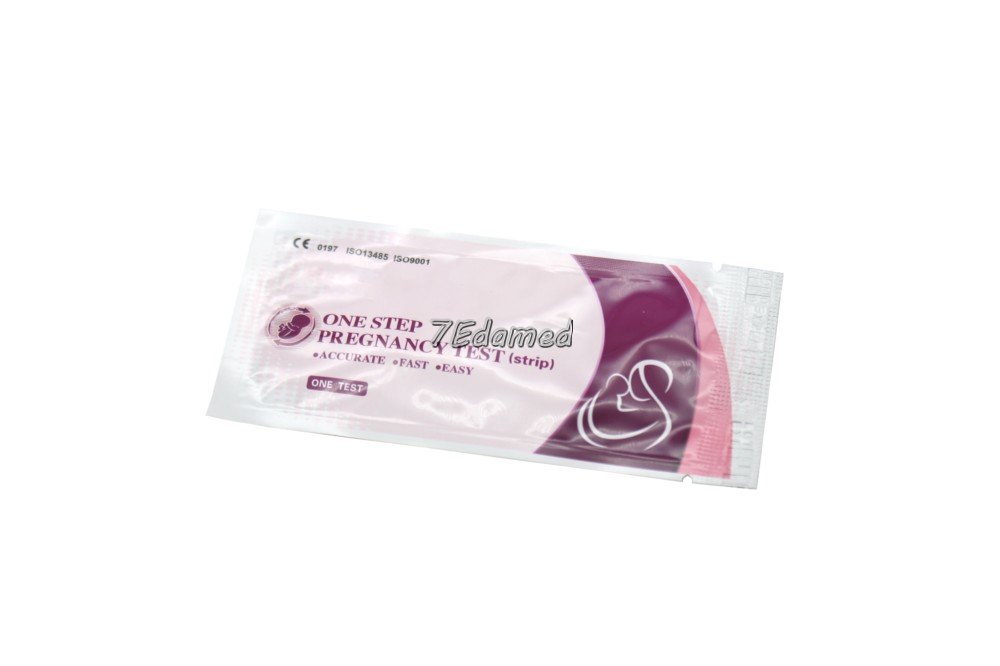easy at home pregnancy test
Catalogue

pregnancy test principle
This strain is made of human chorionic gonadotropin (HCG) antibody and anti-mouse IgG, respectively, solid-phase nitrocellulose membrane and colloidal gold-labeled anti-HCG monoclonal antibody and other reagents are adhered in sequence, using immunochromatographic double antibody sandwich method The principle.
During the test, the urine sample is dropped onto the sample loading point of the test strip and chromatographs upward under the capillary effect. If it is positive, the HCG in the specimen is first combined with the colloidal gold HCG antibody during the chromatography, and then the chromatography is continued, and then the conjugate will be bound by the HCG antibody immobilized on the membrane, and it will appear in the test area (T) A purple-red band. This band is formed by the combination of HCG antibody gold-labeled particles with HCG antibody on the membrane. If it is negative, there will be no purple-red band in the test line area (T).
Regardless of whether HCG is present in the specimen, a purple-red band will appear in the control line area (C). The purple-red band in the control line (C) is the standard for judging whether there are enough samples and whether the chromatographic process is normal. It also serves as the internal control standard for reagents.

Sample requirements
Urine specimens can be collected in a clean, dry container. Urine can be detected within a day, but the highest concentration of HCG is usually in the morning urine. If the specimen is not tested immediately, it can be stored at 2-8°C for 48 hours before the test; if the storage time needs to be extended, it can be frozen below -20°C. The frozen specimen should be fully melted and restored to room temperature before testing, and shake well. When the urine sample appears turbid or precipitated, do not shake it and take the supernatant for testing; or take the supernatant for testing by centrifugation or filtration.
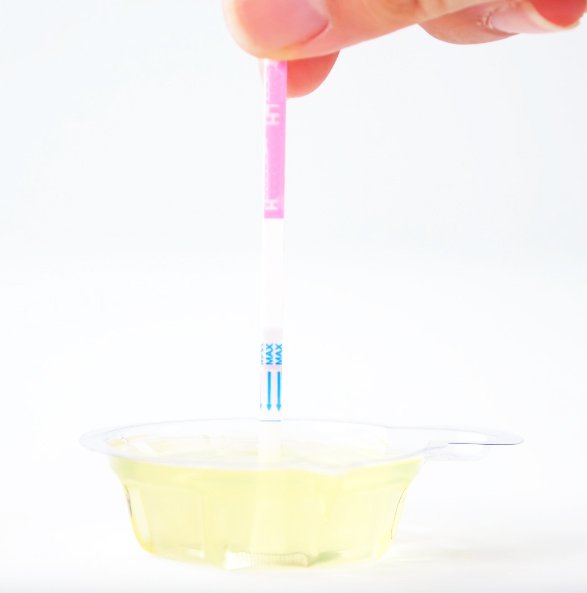
Operation method of pregnancy test stick
The tested samples, reagents and other equipment should be used after returning to room temperature. If you open the package, you should use it as soon as possible within 1 hour.
- Test strip: Take out the test strip and immerse the end with the arrow mark into a container containing urine. After at least 3 seconds, take it out and place it flat on a clean surface of non-absorbent material, and wait for the appearance of colored strips. Observe the results for 5 minutes. (Note: the urine interface should not exceed the “MAX” line on the paper)
- Test cassette: Take out the test cassette from the aluminum film bag, lay it flat on the table, use the straw in the packaging bag to suck urine, drop 3 drops of the urine sample into the sample hole, and observe the result in 5 minutes.
- Test pen: Take the test pen out of the aluminum film bag before use, unplug the cover, let the urine drip on the urine suction port of the test pen when urinating, and maintain the urine collection time of 4~5 seconds (please pay attention to the urine Do not wet the display window), then put on the cover, continue to hold the test pen flat or lay the test pen flat, and observe the results for 5 minutes.
Result judgment
- Negative: Only the control line appears, indicating that there is no pregnancy;
- Positive: Both the control line and the test line are colored, indicating that they are pregnant;
- Invalid: The control line does not show color, indicating that the test has failed or the reagent has failed. Please re-test with a new test strip. If the problem persists, you should stop using this batch of products immediately and contact your local supplier or manufacturer
Remarks: The color bands of the quality control line and the test line may show shades of color due to the amount of hCG in the urine. When the HCG concentration is high, the test line is obvious, and the control line may become weak, which is a normal result.
- Remarks: The judgment is invalid after 15 minutes
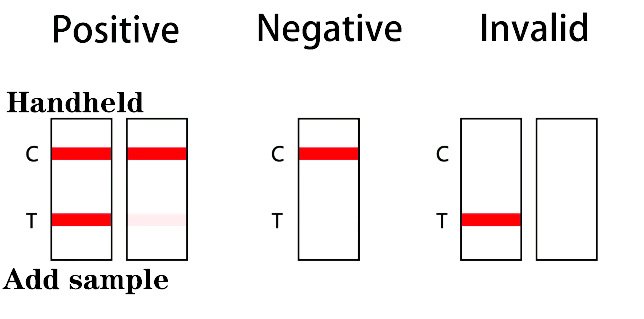
Reference
- Negative-urine from healthy men and non-pregnant women, the concentration of HCG contained in it should not be higher than the analytical sensitivity.
- The concentration of HCG varies greatly between pregnancy time and different individuals.
Limitations of the test method
- This reagent is used to qualitatively detect HCG in urine specimens, but its concentration cannot be determined.
- Patients with uterine tumors, hydatidiform moles or menopause may have a positive result due to the high content of HCG in the urine. If your multiple tests are inconsistent with the expected results, you must consult a doctor.
- If the possibility of pregnancy is suspected, and the urine test is negative (maybe the urine is too thin or early pregnancy), you can re-collect the morning urine after 48 to 72 hours for re-testing.
- After the pregnancy is terminated due to natural or unnatural reasons (including natural childbirth, caesarean section, habitual abortion or medical abortion), the HCG test in the urine sample will be positive for several weeks.
- Other conditions including trophoblast disease or non-trophoblast tumor disease (such as endometrial hyperplasia, breast cancer, lung cancer) can also cause the increase of hCG concentration. Therefore, the test results must be judged by the doctor after synthesizing other clinical symptoms and other laboratory indicators. Only after excluding the above several possibilities, can we use our company’s hCG detection reagent to detect hCG in urine to determine whether you are pregnant. If your multiple tests are inconsistent with the expected results, you must consult a doctor.
- Such as ectopic pregnancy, ovarian cyst can produce negative or irregular results. If you are still in doubt, it is recommended to use a quantitative kit for testing.
- Analgesics, oral contraceptives and other common drugs do not interfere with the test results.
- Under normal circumstances, this reagent is very reliable, but incorrect use may affect the accuracy of the results. For example, the display window is wet or the urine suction is insufficient.
- When your test result indicates pregnancy, please go to the hospital to see a doctor and confirm the diagnosis. At the same time, the doctor will give you further guidance.
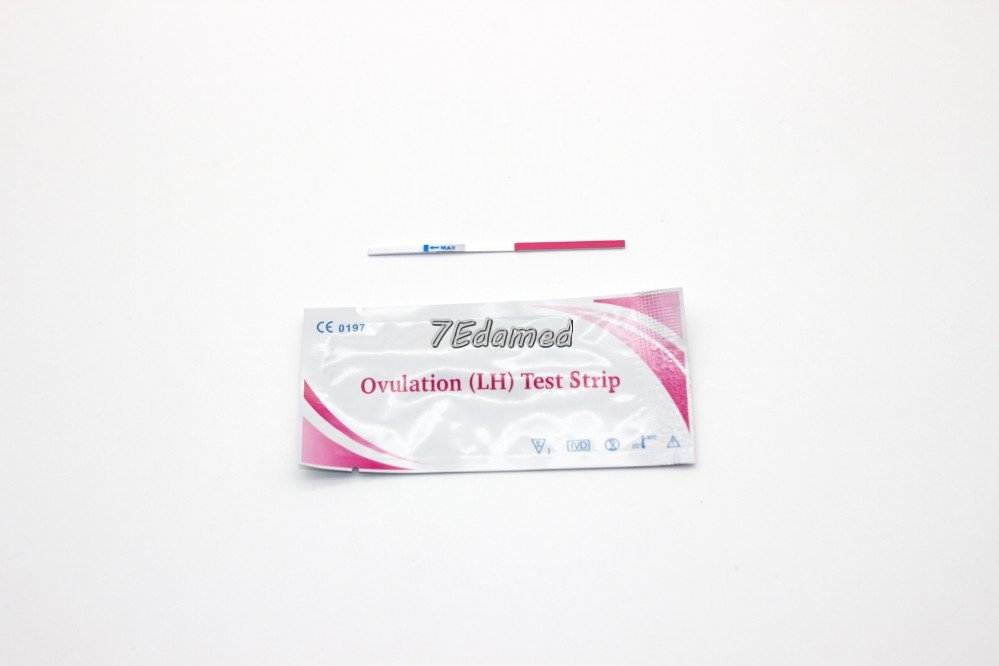
Product performance index
- Lowest detectable quantity: Detect with HCG national standard product, observe the result in 5 minutes, not higher than 25mlU/ml.
- Compliance rate of negative reference products: it is negative when tested with 500mlU/ml LH, 1000mlU/ml FSH and 1000mlU/ml TSH.
- Interference test: Urine contains common OTC drugs, chemical analytes (caffeine, vitamin C), biological analytes (such as glucose, protein, bovine serum albumin, bilirubin, heme), etc. Affect the test results.
- Precision: Measured with the same concentration of HCG standard (n=10), the reaction result is consistent with the color rendering.
FAQ
Q1 : When can I use the Early Pregnancy Test Strip?
A: Generally, the morning urine test should be started as early as 7 days after the intercourse, 12 days after the intercourse, or three days after the menstrual period, the more accurate the test will be, and the later will be more accurate.
Q2 : Why do you need to read the results within 1-5 minutes? Will the test results change?
A: In different pregnancy periods and different disease states, the HCG content in urine is different. When the content is high, the result is displayed faster, and two lines of positive results can appear in 1 minute, and when the content is low, enough reaction time is required, and it takes 5 minutes to read. Individual negative reactions may appear positive after 10 minutes or longer, which cannot be used as a basis for judgment. Therefore, the results should be read within 1-5 minutes.
Q3 : Does medication affect the results?
A: General medications (such as cold medicines, antibiotics, painkillers, etc.) do not affect the accuracy of the test, but injections or fertility drugs will affect the results.
Q4 : If the test result is positive, must it be pregnant?
A: Under normal circumstances, a positive result indicates that the tester is pregnant, but the human body will have a positive result under the following conditions:
1) Women have abnormalities such as ectopic pregnancy, biochemical abortion, etc. Pregnancy, please diagnose with clinical trials.
2) Uterine tumors, hydatidiform moles or menopausal patients may have a positive result due to the high content of HCG in the urine.
Please confirm the diagnosis with clinical trials.
Q5 : What is biochemical pregnancy?
A: Biochemical pregnancy is the most common type of spontaneous abortion in women after pregnancy. The main manifestation is the appearance of pregnancy indicators in the blood or urine. After a certain height, it suddenly dropped to normal. Many people do not take the test or even know that they are pregnant. The amount of bleeding in a biochemical pregnancy is average, and there is not much difference between normal menstruation. When a biochemical pregnancy occurs, you must go to the hospital for review on time and pay attention to your body.
Q6 : Can the early pregnancy test strip be used repeatedly?
A: No, this product is for one-time use.

chinadamed@gmail.com
Hello, I am the author of this article, I have been engaged in the medical industry for 13 years, if you want to wholesale medical products from China or want to know more information about medical products, please contact me.
TEDAMED

